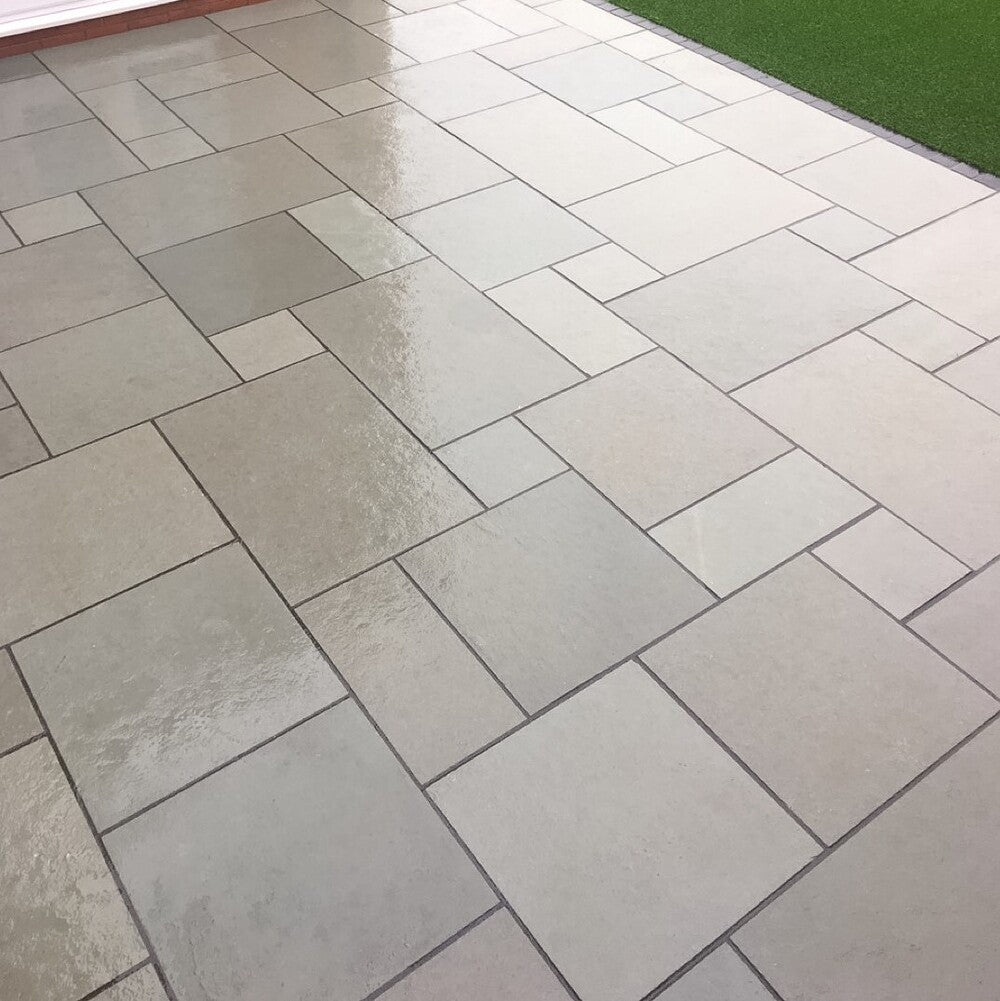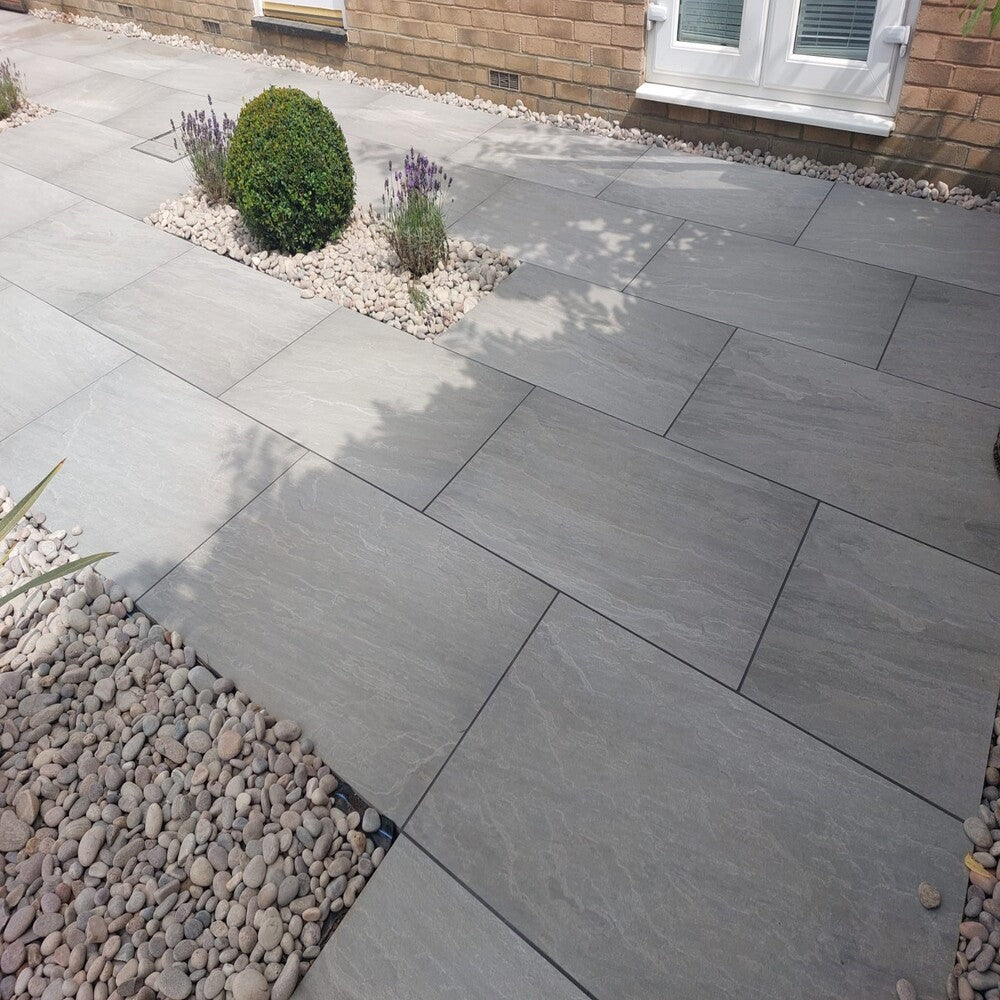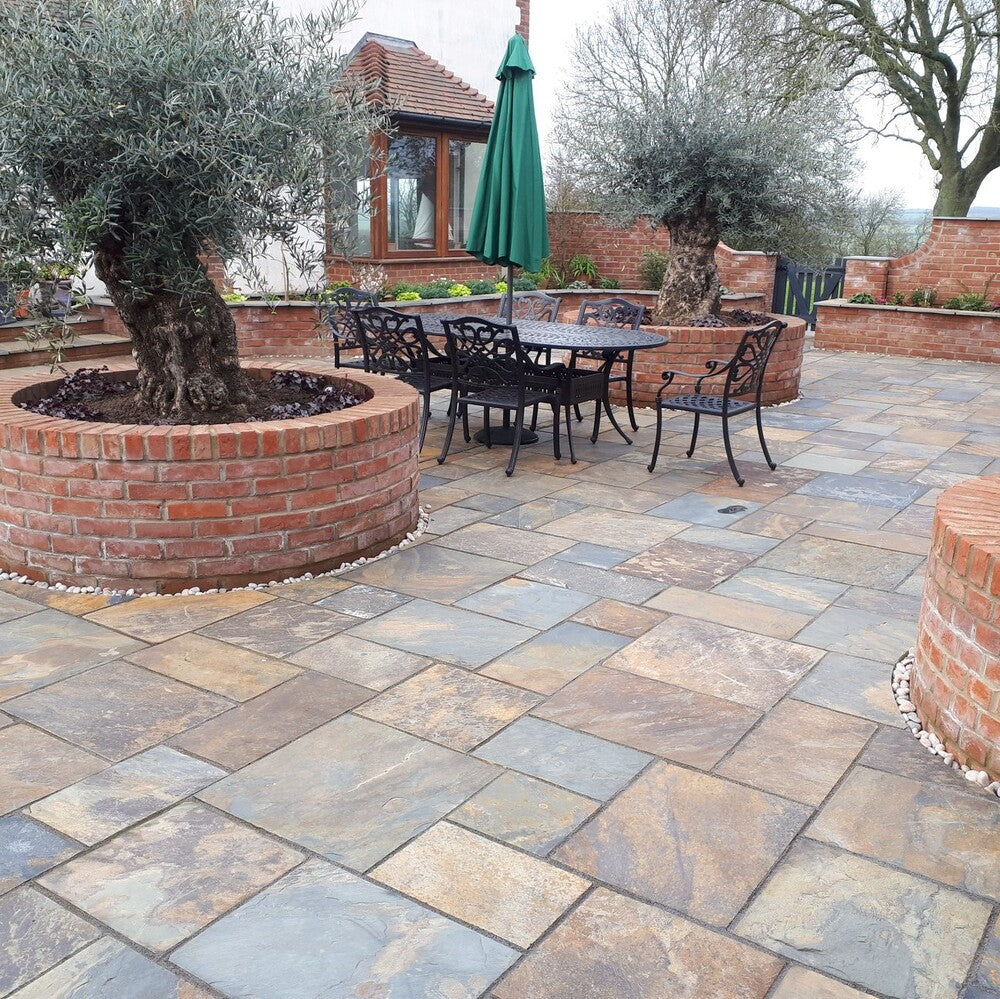Cash-conscious home buyers considering a new patio area in the garden may be considering thin paving slabs over going for a thicker paving option in order to save a few pounds. While thin paving slabs from the UK may seem like a cheaper option on paper, in the long-term they could turn out to be a lot more costly even if it helps reduce the paving cost per square meter. Traditionally thick pavers measure between 25 and 35mm in thickness, however over the last 10 years they have progessively been getting thinner. It all started when suppliers began to calibrate their paving for easier installation. Intially the calibration was done to 25mm, which was plenty thick enough, but thinner and thinner paving has reached the market with consumers looking for cheaper options all the time.

However, there is a breaking point where the slabs become too thin and risk failure - so lets get into why this may be.
Why Do Thin Paving Slabs Fail? - The Freeze-Thaw Cycle In Paving Slabs
You might not think it, but outdoor paving slabs go through hell and back throughout the year. You may think they just sit there year-round, so why does it matter how thick they are? But if you think of the extreme colds of winter and then the hot peaks of summer, the slabs are actually put under a lot of pressure as temperatures and conditions change.
When slabs are in freezing conditions, they experience what is called the "freeze-thaw" cycle. There are always internal, natural joins in the slabs which can contain small amounts of water trapped within the stone. It happens at quite a small scale, but these water-filled joins are what makes freeze-thaw cycle affect paving slabs. Under cold temperatures, this internal water can freeze and expand in size by as much as 10%. Just imagine the pressure this can put on the stone itself, suddently the small gaps within the stone are trying to expand, putting fairly large pressure on the stone as the weather drops below freezing. Then, once the temperature rises above freezing again, the joins thaw and the stone is able to relax. This constant freezing pressure, following by the thawing puts an awful amount of pressure on the stone as it's not a particularly flexible material.
So while the slabs may look like they aren't doing a lot. They are effectively "breathing" as part of the freeze-thaw cycle during the colder weather. The freeze-thaw cycle slowly affects the integrity of the stone as it ages - no matter the thickness of the stone, it will go through this cycle. However, thinner paving slabs have much less integrity to start with. Naturally, the thinner the piece of stone, the less resilient it is. Every freeze-thaw cycle affects a higher percentage of the stone. If the paving slab is a thin sheet of 5mm for example, it's not going to take very long for the freezing and thawing of the internal pockets to completely ruin that entire piece of stone as every cycle will make a large impact. Before long, the stone will be weakened to the point of failure. At 5mm, it may only take a few nights of freeze-thaw, before there is a substantial change in the integrity of the tile. The thicker the stone, the more robust it is, so the less of an impact freezing and thawing will have, making it less likely to cause the failure of the slab.

So how thin is too thin?
That's the key question. You want to balance the cost and benefit in regards to the thickness of your pavers. The thinner the slab, the more area coverage can be packed into a single pack, therefore the more cost-effective it is. But the thicker the slab, the less chance it has of failing from the battering it gets from the elements. So where exactly do you draw the line? You want your stone to last, but we understand that paying £100 per m2 is just ridiculous.
10+ years ago, 25mm-35mm was the standard thickness for paving slabs and worked well. They were uncalibrated, but nice and thick and very suitable for the job. They aged well, handled the elements and very rarely failed. But the issue with this size was you got around 20% less per pack of paving, meaning the cost per square meter was quite high and the 22mm calibrated slabs were slowly introduced in order to meet the consumer need of more cost-effective paving.
Since then, the 22mm paving has become the gold standard. 22mm is thick enough to maintain its integrity through the elements, but the dimensions are also reasonable enough to fit a nice quantity of paving per pack. However, recently we are seeing the cost-saving measures pushed to the max. First it was 20mm calibrated, then it was 18mm and now we are even seeing some packs of 15/16mm paving sold in order to pack more per box and push the cost-saving measures to their limit.
No formal testing has been done - such is the industry. There are no formal tests that stone needs to pass to be declared "fit-for-purpose" so there is nothing stopping these thin paving slabs reaching the market. But drawing from experience of ourselves and our trade customers, using slabs thinner than 22mm is pushing the limits of longevity too far. 18mm is the absolute minimum you should be using - ideally 22mm - but if you start going less than 18mm then you are starting to take large risks with your investment. The slabs may not fail immediatley, so it's hard to judge straight away, but after a full winter or maybe 2, you'll almost certainly find cracking, moving or rocking as the thinner slabs begin to lose their integrity thanks to the repetitive freeze-thaw cycle that you simply cannot avoid.

The general rule of thumb, when it comes to outdoor products, is the thicker the better. But where you have an area that is going to get a lot of foot traffic, then thin paving is probably not the way to go. Examples such as:
- A swimming pool - if you are having a pool built in your garden, we would recommend thick paving slabs with an anti-slip surface, over thin paving slabs. They are going to be heavily used and around a lot of water and chemicals. Make sure they are good quality.
- Patio furntire areas - Thick pavers are also better for paved areas in the garden over thin paving stones. This is because thick paving slabs are designed to cope under the stress of weight, garden furniture and foot-traffic.
- Driveways - Thick pavers are the better option for driveways, paths and patios where there is a lot heavy foot and vehicle traffic. Unlike thin paving stones, thick paving stones will be thick and strong enough, so they don’t break or crack under the heavy weights. Overall, it's really about the foundations when it comes to driveway spaces, but even with immaculate foundations, thin paving slabs can just crack under pressure.
Thin Paving Slabs - The Costs are Hidden
While you may think that it doesn’t matter if you have thick slabs or thin paving slabs, because ultimately they look the same when they are laid, it's importnat to consider that there are a lot of hidden differences.
The issue often can’t be seen from above until it’s too late. That's why the market has become flooded with them - the issues won't be apparent until a year or two down the line, and by then it's far too late for any free fix from your installer or supplier. The industry is fairly unregulated and as a result is fraught with opporunities to be mis-led.
We completely understand a priorty for a lot of consumers is the cost of the paving, and in some cases the budget is restrictive. But it's worth noting that thin paving is likely to need replacing eventually. The beauty of paving and creating a space with thick, robust paving slabs is that it is a once in a decade job and maybe even more infrequent than that. So if budget is restrictive but you are really looking for a new patio for the next spell of warm weather, than maybe thinner paving is something you must go with. But expectations should be clear:
- They will likely need replacing eventually. So it's another cost a little further down the line. And,
- Don't go thinner than 18mm. This is the absolute, absolute minimum and should never be gone below. A 15mm slab can fail during it's first frost, so it's not even saving you money in the short term.

We hope this write up is a good illustration of the risks of thinner paving. After all, there are no real industry standards set by law that can help you pick the right product, or give you recourse if things do go wrong, but the experience and training within the industry gives us a very good idea of why thin paving is not a good idea. We know there are reasons for all purchasing decisions, but it's good to know what you might be getting yourself into with your choices, and we feel the information out there is a little incomplete so we tried our best to sum it up. At least if you know you have to opt for something thinner, you know to keep an eye out for the risks we've explained here.
Please get in touch via email or live chat if you do have any questions. We'd be happy to help.



